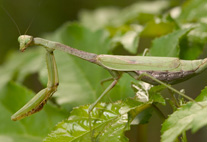Abstract
Coarazuphium caatinga sp. n. occurs in limestone caves located in Campo Formoso municipality, in the Brazilian Caatinga (Bahia, Brazil). The new species is close to C. formoso although they are morphologically distinct by the elytra sinuosity, which is more pronounced in C. caatinga; the aedeagus is more tapered at the tip in this last species. Important traits found in C. caatinga are the variable size presented by the eyes, and the remarkable variability of body pigmentation among specimens; both traits do not seem to be correlated. Coarazuphium Gnaspini, P., Vanin, S.A. & Godoy, N.M., 1998, species exhibit advanced troglomorphic characters in comparison to other Brazilian cave beetles, as are increased extra-optic sensory structures, presence of particular sensilla, and sensory and gustatory receptors. These characters are not detected under routine microscopy and thus require ultrastructural methods for their study.

